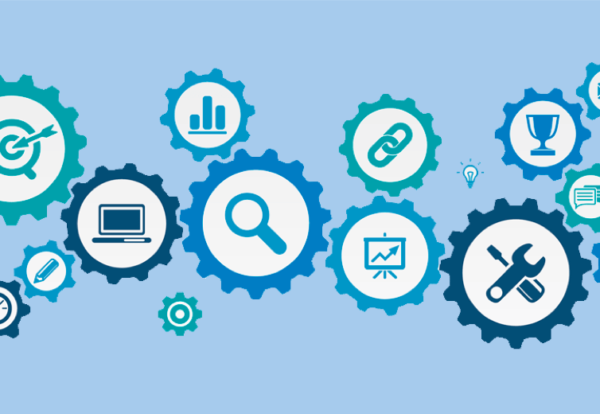Top Software Development Trends in 2025
As we move deeper into the digital age, the software development landscape is rapidly evolving. The year 2025 promises to bring a host of innovative trends that will redefine how businesses approach technology. This article will explore the top software development trends that are set to shape the future, providing insights and actionable strategies for tech professionals and businesses alike.

Table of Contents
-
The Rise of Artificial Intelligence
- 1.1 AI in Development Processes
- 1.2 Ethical Considerations in AI
-
Low-Code and No-Code Development
- 2.1 Democratizing Development
- 2.2 Limitations and Opportunities
-
The Dominance of Python and JavaScript
- 3.1 Why Python is Preferred
- 3.2 JavaScript’s Evolving Role
-
Emergence of Modern Programming Languages
- 4.1 Rust: Safety and Performance
- 4.2 Go: Efficiency in Cloud Computing
- 4.3 Kotlin: The Future of Mobile Development
-
Cloud-Native Development and Microservices
- 5.1 Benefits of Cloud-Native Applications
- 5.2 Microservices Architecture Explained
-
Integration of DevSecOps
- 6.1 The Importance of Security
- 6.2 Tools for DevSecOps
-
Blockchain Beyond Cryptocurrency
- 7.1 Applications in Supply Chain Management
- 7.2 Transforming Healthcare
-
The Impact of 5G Technology
- 8.1 Enhancing Real-Time Applications
- 8.2 Opportunities for IoT
-
Quantum Computing: The Next Frontier
- 9.1 Potential Applications
- 9.2 Challenges Ahead
-
Edge Computing for IoT Solutions
- 10.1 Reducing Latency
- 10.2 Use Cases in Various Industries
-
User Experience (UX) Focus
- 11.1 Importance of UX Design
- 11.2 Techniques for Enhancing UX
-
CI/CD Practices for Agile Development
- 12.1 Benefits of CI/CD
- 12.2 Tools to Implement CI/CD
The Rise of Artificial Intelligence
AI in Development Processes
Artificial Intelligence continues to revolutionize software development by automating various processes. AI tools are being integrated into coding environments, providing real-time code suggestions and automating repetitive tasks. This not only speeds up the development cycle but also enhances the quality of the code produced.
Ethical Considerations in AI
As AI becomes more prevalent, ethical considerations are taking center stage. Developers and companies are now more focused on creating ethical AI systems that prioritize transparency and fairness. This shift is crucial for maintaining user trust and ensuring that AI technologies benefit society as a whole.
Low-Code and No-Code Development
Democratizing Development
Low-code and no-code platforms are empowering non-technical users to create applications without extensive coding knowledge. This democratization of software development allows companies to respond more quickly to market demands and innovate at a faster pace.
Limitations and Opportunities
While these platforms offer significant advantages, they are not a panacea. Complex projects still require skilled developers to ensure robustness and security. However, they serve as valuable tools for rapid prototyping and can significantly enhance productivity.
The Dominance of Python and JavaScript
Why Python is Preferred
Python remains a favorite among developers due to its simplicity and extensive libraries. It is particularly well-suited for data analysis, machine learning, and automation, making it an essential language for many modern applications.
JavaScript's Evolving Role
JavaScript continues to be the backbone of web development. With frameworks like React and Angular, it enables the creation of dynamic and responsive user interfaces. As businesses increasingly invest in web applications, JavaScript's role is set to grow even further.
Emergence of Modern Programming Languages
Rust: Safety and Performance
Rust is gaining traction for its focus on safety and performance. Its memory safety features make it an excellent choice for systems programming, and it is increasingly being adopted by companies looking for secure and efficient solutions.
Go: Efficiency in Cloud Computing
Go, or Golang, is known for its simplicity and efficiency, particularly in cloud computing and microservices. Its concurrency model allows developers to build scalable applications, making it a preferred choice for cloud-native development.
Kotlin: The Future of Mobile Development
Kotlin has emerged as the preferred language for Android development. Its interoperability with Java and concise syntax make it attractive for developers, leading to its widespread adoption in mobile app development.
Cloud-Native Development and Microservices
Benefits of Cloud-Native Applications
Cloud-native development allows businesses to leverage the full potential of cloud infrastructure. This approach enhances flexibility, scalability, and resilience, enabling teams to innovate rapidly and respond to changing market conditions.
Microservices Architecture Explained
Microservices architecture breaks applications into smaller, independently deployable services. This modular approach facilitates faster development cycles and reduces downtime, making it ideal for businesses that require agility in their operations.
Integration of DevSecOps
The Importance of Security
As cyber threats become more sophisticated, integrating security into the software development lifecycle is essential. DevSecOps ensures that security measures are embedded at every stage of development, rather than being an afterthought.
Tools for DevSecOps
Numerous tools are available to assist with DevSecOps practices, including automated security testing frameworks and vulnerability scanning tools. These resources empower development teams to identify and mitigate risks early in the process.
Blockchain Beyond Cryptocurrency
Applications in Supply Chain Management
Blockchain technology is being adopted in various industries beyond finance. In supply chain management, it provides transparency and traceability, helping companies track products from origin to delivery.
Transforming Healthcare
In healthcare, blockchain is being utilized to secure patient data and improve interoperability among providers. By ensuring data privacy while allowing authorized access, blockchain is poised to revolutionize how healthcare information is managed.
The Impact of 5G Technology
Enhancing Real-Time Applications
The rollout of 5G networks is transforming application development by enabling faster and more reliable connectivity. This technology is critical for real-time applications, such as those used in smart cities and autonomous vehicles.
Opportunities for IoT
5G technology enhances the capabilities of IoT devices, allowing them to communicate in real-time. This advancement opens new possibilities for applications in various sectors, including manufacturing, healthcare, and transportation.
Quantum Computing: The Next Frontier
Potential Applications
Quantum computing promises to solve complex problems that traditional computers struggle with. Applications range from financial modeling to drug discovery, making it a field ripe for exploration and investment.
Challenges Ahead
Despite its potential, quantum computing faces significant challenges, including the need for robust quantum algorithms and error correction techniques. As research progresses, we can expect breakthroughs that will lead to practical applications.
Edge Computing for IoT Solutions
Reducing Latency
Edge computing processes data closer to its source, significantly reducing latency. This capability is crucial for applications that require real-time responses, such as autonomous vehicles and industrial automation.
Use Cases in Various Industries
Industries are increasingly adopting edge computing to enhance efficiency and optimize operations. From smart factories to healthcare monitoring systems, edge computing is becoming integral to modern IoT solutions.
User Experience (UX) Focus
Importance of UX Design
As competition intensifies, delivering an exceptional user experience has become paramount. Businesses are investing in UX design to ensure their products are not only functional but also enjoyable to use.
Techniques for Enhancing UX
Techniques such as user-centered design and A/B testing are being employed to refine applications and improve user engagement. By prioritizing UX, companies can foster customer loyalty and drive growth.
CI/CD Practices for Agile Development
Benefits of CI/CD
Continuous Integration and Continuous Delivery (CI/CD) practices streamline the software development process, allowing teams to release new features and updates more frequently and reliably.
Tools to Implement CI/CD
Numerous tools are available to facilitate CI/CD practices, including Jenkins, GitLab, and CircleCI. These resources help teams automate testing and deployment, ensuring consistent quality and faster delivery.
Conclusion
The software development landscape is set to undergo significant transformations in 2025, driven by advancements in technology and evolving business needs. By staying ahead of these trends, businesses can harness the power of innovation, optimize processes, and create solutions that meet the demands of a rapidly changing market. As we embrace these changes, the future of software development looks promising, offering new opportunities for growth and success.







